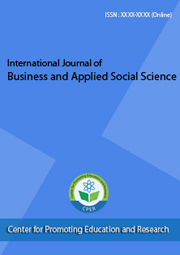Journal Menu
current
VOLUME: 6; ISSUE: 10; OCTOBER: 2020
Table of Contents
Articles
Author(s): Prof. Jorde Jakimovski
Full Text
1237 1320
1237 1320
Abstract:
In the past period we witnessed major and essential problems in the regions of the Republic of North Macedonia. The difficulty of individual problems, which are often manifested in a more serious form, as a consequence of the deep economic, social and demographic changes in the society, often visible without deeper scientific analysis, referred to partial measures of the economic, social and demographic policy in a short time interval. Apart from the positive impact, some of these measures of the population created certain uncertainties and insecurities regarding the employment, the reduction of migrations and the improvement of the living standard. Therefore, with certain occasional improvements, for a longer period of time some regions and micro-regions do not follow the dynamics of the overall socio-economic development, rather they slow down the dynamics of development.This paper should give certain elements that can serve in the creation of individual measures, directions and paths for improving the economic, social and demographic structure in the regions in the Republic of North Macedonia. The paper analyses data at the administrative-territorial level by regions in the period 2002-2015. The territory of the Republic of Macedonia is divided into 8 regions (Vardar, Eastern, South-Western, South-Eastern, Pelagonia, Polog, North-Eastern and Skopje Region).
The paper has been divided into three parts:
1. The first part analyses the general economic indicators of the development of the regions: the dynamics of the share of the gross added value, the gross domestic product per capita and the dynamics of the share of investments by regions.
2. The second part presents the natural movements of the population and the utilization of the labour contingent by regions.
3. The third part of the paper presents the changes in the labour force and the dynamics of salary, as the main source of income.
In fact, all indicators are assessed mainly on the basis of available data from secondary sources (State Statistical Office).






